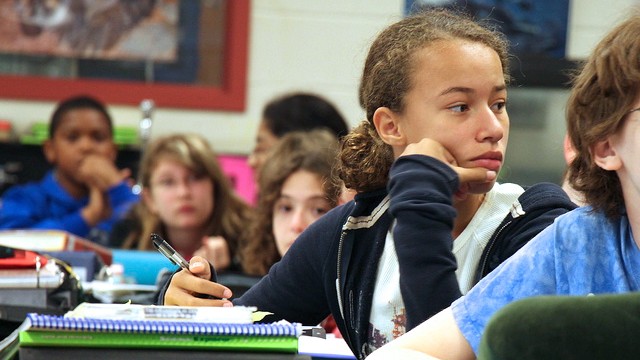• Once they begin listening, these learners maintain their focus; if their attention wanders, they bring it back to the words being spoken. They don’t allow themselves to be thrown off by confusing or unfamiliar details. Instead, they take note of what they don’t understand and make inferences about what those things might mean, based on other clues available to them: their previous knowledge of the subject, the context of the talk, the identity of the speaker, and so on. They’re “listening for gist,” and not getting caught up in fine-grained analysis.
• All the while, skilled learners are evaluating what they’re hearing and their own understanding of it. They’re checking their inferences to see if they’re correct, and identifying the questions they still have so they can pursue the answers later.
Such strategies are all about metacognition, or thinking about thinking, and they yield a variety of benefits. Research indicates that learners who engage in metacogniton are better at processing and storing new information, better at finding the best ways to practice and better at reinforcing what they have learned. In a 2006 study by researchers from Singapore, Chinese speakers who were learning English as a second language reported increased motivation and confidence after they were taught metacognitive strategies.
Observing With Intention
You’ve heard it before, and it’s true: We learn by doing. But we also learn by watching. Whether it’s a salsa teacher running through a dance sequence, a tennis coach demonstrating proper serving technique or a science professor conducting a dissection in front of the class, observing an expert at work is an opportunity to hone our own skills.
This is especially true in the case of motor movements, and research in neuroscience is beginning to show why: when we watch someone else’s motions, the parts of the brain that direct our own physical movements are activated. Observation accelerates the learning process because our brains are able to map others’ actions onto our own mental representations, making them more detailed and more accurate. Using brain scans, scientists are figuring out how this process works—and how we can make the most of what we see.
Scott Grafton, a professor of psychology at the University of California, Santa Barbara, has employed studies of dancers to investigate the operation of what he calls the “action observation network,” a circuit in the brain that is stimulated whenever we observe a movement, imagine performing it or actually engage in it ourselves. In a study published in the journal Cerebral Cortex in 2009, Grafton and his co-authors asked participants to rehearse a dance sequence set to a music video.
For five days they practiced the routine; on each day they also watched a different dance sequence without trying it out for themselves. The subjects’ brains were scanned using functional magnetic resonance imaging (fMRI) before and after the five-day period.
The second round of scans revealed that the dancers’ action observation networks showed similar patterns of activation as they watched both videos—the one with a dance sequence they had practiced, and the one with a dance sequence they had simply watched. “Human motor skills can be acquired by observation without the benefit of immediate physical practice,” Grafton and his colleagues concluded.
We derive the most benefit from observation when we have in mind the conscious intention to carry out the action ourselves. In a 2006 study published in the Journal of Neuroscience, psychologist Scott Frey of the University of Oregon scanned the brains of participants as they watched videos of someone putting together and taking apart a toy made of several parts. One group of subjects simply watched the demonstration; another group was aware that they would be asked to reproduce the actions they viewed on the video.
Although members of both groups were lying completely still inside an fMRI machine, the brains of the second group showed activation in a region involved in motor learning.
Simply knowing that we will be expected to carry out the motions we observe seems to prime the brain to learn better.


